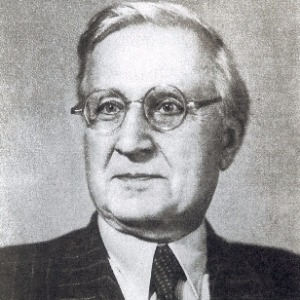
Composer and scholar of
music (B. 6 May 1955, Istanbul – D. 18 December 1980, Istanbul). He is the son
of an Anatolian Military Judge, Dardağanzade Hacı Mehmed Efendi. After
graduating from
In 1943 he was appointed
Director of Istanbul Municipal Conservatory with a five-year-long contract. He
was asked to reopen the Department of Turkish Music which was closed in 1926
and organize the Department of Western Music. Arel created various concert
groups in the Department of Western Music. He raised the department to the
level of a mediocre Western conservatory. In the Department of Turkish Music,
he established a concert group called İcra Heyeti (T.N. Group of Performers).
In the lectures he gave he taught the theory of Turkish Music they created with
Suphi Ezgi.
Arel quit his duty in the
Municipal Conservatory in 1948 and he established Advanced Turkish Music
Conservatory Association. In Musiki Mecmuası
journal of this association his numerous articles were published. In these
articles mostly about music, he was in between people who claimed that
traditional music should be quit and replaced by the Western music and people
who claimed that traditional music should be conserved as it was and Western
music should be opposed. Arel suggested a sort of reconciliation. Polyphony was
superiority but taking it with the sound system, instruments and techniques of
composition and orchestration of the Western music would not fit to the
national corpus. What needed to be done was to create a polyphonic Turkish
music without detaching from traditional sound systems and maqams and by
improving traditional instruments. These ideas of Arel did not have any
influence on two opposed groups he was in the middle of. People in the first
group were determined about not adding traditional instruments to the orchestra
and not opening a department of Turkish Music in Ankara State Conservatory (it was
the only state conservatory at that time). People in the second group accused
Arel of degenerating Turkish music. Having said that, especially under the
influence of the lessons Arel gave between 1943 and
The most important ones among
Arel's published theoretical works are Türk
Musikisi Nazariyatı Dersleri (1968) and Türk Musikisi Kimindir (1969). In the
first one frets, tones, quarter-rests, quintettes, maqams, styles and forms are
explained, examples from classic works are given. Türk
Musikisi Kimindir which was first published in Türklük journal (It is published by
Arel in 15 volumes in 1939) and later in Musiki
Mecmuası is a resistance to arguments claimed
by some Turkish writers defending some Western writes and their ideas, that the
Turkish music originated from ancient Greek, Byzantine, Arabic and Iranian
music.
Arel is a very productive
composer. During his youth he composed hundreds of pieces in the Western style
music which he burnt afterwards. He has about 600 compositions in various
forms, most of them were monophonic. Most of his monophonic works he composed
starting from the age of twenty-five are verbal works consisting of various
forms such as Mawlawi ritual, rest, chants, songs, compositions, ağır
semai, yürük semai. Most of his 116 monophonic instrumental works
are in forms of peşrev and saz semaisi. Most of his polyphonic
works he composed in the last years of his life are duets, triplets and
quartets for various instruments and voices. Many of Arel's compositions were
never vocalized. Reasons of this are that these works which usually expected a
technical competence from an instrumentalist or vocal artist and which
presented a new melodic fiction and transition understanding were found odd by
performers who continued the traditional style and there were not expert
performers among Arel's students.
HIS
FAMOUS COMPOSITIONS: Düğün Evinde (oyun havası (dance music)),
Ham Hayat (saz semaisi), Köyden
Haber (saz semaisi), İşveler (peşrev), Mini Mini (Peşrev), İnce Bir Bulut gibi
Siyah İpek Peçesi (song).
REFERENCE:
Rahmi Kalaycıoğlu / Türk Musikisi Bestekârlar Külliyatı (4 cilt, 1979), Avni
Anıl / Anılar ve Belgelerle Musikimiz
(1981), Büyük
Larousse (c. 2, s. 773, 1986), Mehmet
Nazmi Özalp / Türk Musikisi Tarihi (1986), Cemil Yener / Müzikte Kim Kimdir? (1987), Yılmaz
Öztuna / Büyük Türk Musikisi Ansiklopedisi (1990), Ahmet Şahin Ak / Türk
Musikisi Tarihi (2002), Vural Sözer / Müzik Ansiklopedik Sözlük (2005), Ana
Britanica (c.2, s. 258, 2005 İhsan Işık / Ünlü Sanatçılar
(Türkiye Ünlüleri Ansiklopedisi, C. 5, 2013) - Encyclopedia of Turkey’s Famous
People (2013) - Resimli ve Metin Örnekli
Türkiye Edebiyatçılar ve Kültür Adamları Ansiklopedisi (C. 12, 2017).